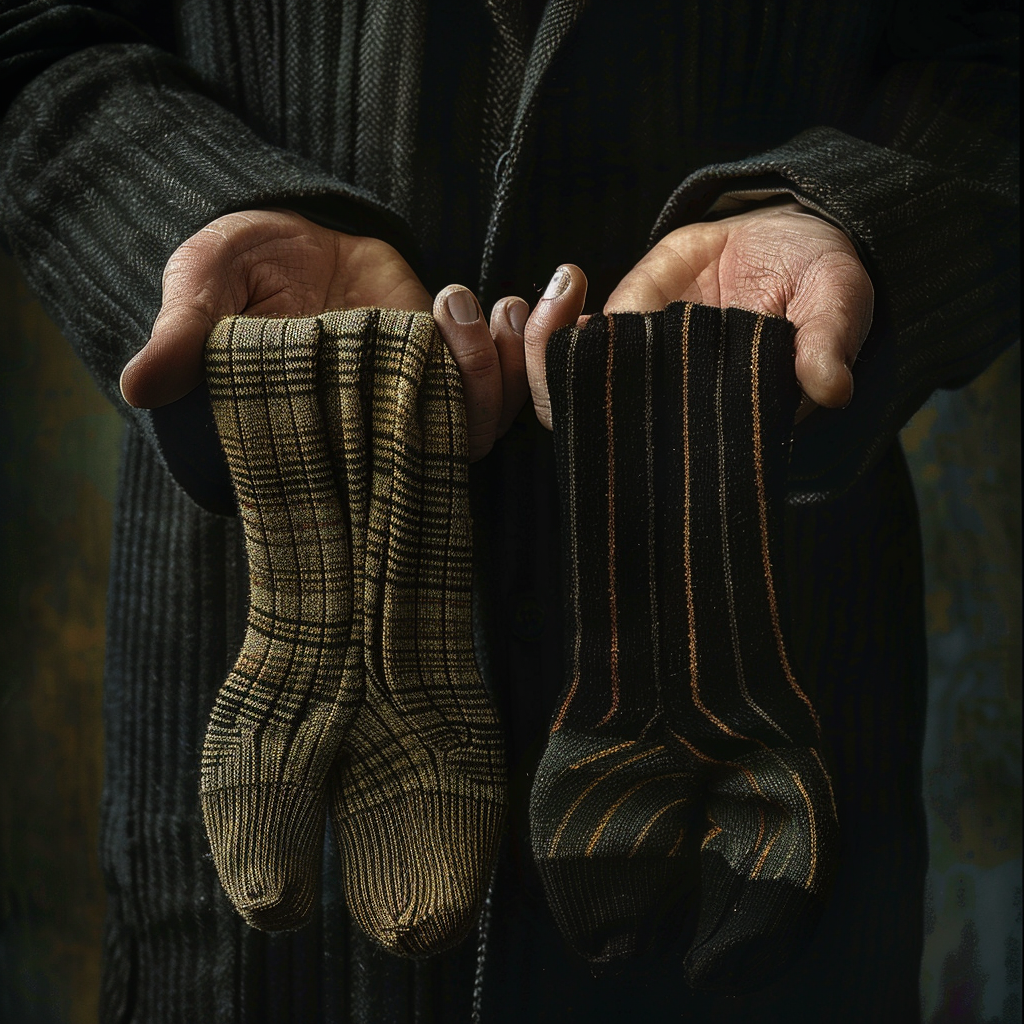Finding dress socks that fit perfectly can be challenging, especially for people with smaller feet. Ill-fitting socks can bunch up, slide down, or feel too tight, which affects not just comfort but also confidence. When it comes to fabric choice, cotton and wool are two of the most popular options. This article will dive deep into which material works best for those with smaller feet and what factors to consider when making a decision.
Shrinkage and Fit: The Cotton Dilemma
Cotton, a natural and breathable fiber, is a common choice for dress socks. However, it has an inherent tendency to shrink when washed, especially if not pre-treated. This shrinkage can work in favor of individuals with small feet, as it provides a snug, form-fitting feel. But beware of too much shrinkage that could make the sock overly tight or uncomfortable. Cotton blended with synthetic fibers can help maintain the shape while offering stretch and longevity.
Cotton vs. Wool Socks: Key Differences
- Breathability: Both materials offer breathability, but in different ways. Cotton efficiently wicks away moisture in warmer climates, keeping feet dry and cool. Wool, particularly merino wool, excels in temperature regulation, keeping feet warm in colder weather and cool in hotter temperatures. Wool’s natural moisture-wicking properties also prevent the buildup of bacteria and odors.
- Durability: Wool fibers tend to be stronger than cotton, giving wool socks a longer lifespan. Cotton socks can fray with frequent washing, especially if they are thin dress socks.
- Warmth and Seasonality: Cotton is typically suitable for warm climates, whereas wool provides the necessary insulation in cold weather. Wool can be worn year-round due to its adaptive properties, but cotton might be more comfortable during summer.
Needle Count and Machinery Differences
Socks are produced using specialized machinery, and the needle count (or gauge) determines how tightly knit the fabric is. Higher needle counts result in finer, denser fabric, suitable for dress socks, while lower counts yield thicker socks. Cotton socks typically require machinery with high needle counts to achieve a thin, smooth texture. Wool socks can vary in needle count due to the nature of wool fibers but still achieve a fine finish using different manufacturing techniques.
The Fist Test: Ensuring a Proper Fit
When buying socks, especially without being able to try them on first, one reliable test is the “fist test.” Wrap the foot portion of the sock around your closed fist. If the fabric stretches but isn’t too loose or too tight, it’s likely to fit your foot well. For small feet, this test can help ensure a sock fits snugly around the toes and arch without causing discomfort.
Sizing Guidance: Charts and Shoe Sizes
If shopping online, size charts based on shoe size can help ensure a proper fit. Adult socks often come in generalized size ranges like US Shoe Size 7-11 or 12-16. Check your shoe size and compare it to the manufacturer’s guidelines. If you’re on the cusp between sizes or have particularly small feet, aim for socks with higher elasticity or narrower bands for a closer fit.
When choosing between cotton and wool socks for small feet, consider the climate, durability needs, and personal preferences. Cotton provides a snug fit due to its shrinkage but may not offer as much warmth or longevity. Wool’s moisture-wicking properties, breathability, and durability make it a versatile option. Whatever your choice, experimenting with different brands, sizes, and styles can help you find the ideal fit and comfort level.
---
The Pierre Henry Socks Maison produces the finest cotton socks. Every Pierre Henry Sock is crafted and hand ironed by our team of socks makers at our family's factory.





Leave a comment
All comments are moderated before being published.
This site is protected by hCaptcha and the hCaptcha Privacy Policy and Terms of Service apply.